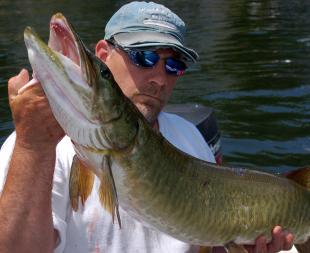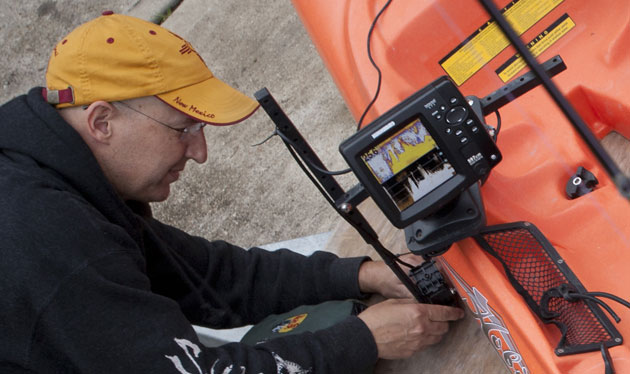Fishing for Spawning Bass
In bass fishing the fishing seasons are broken up into three main seasons. The pre spawn the spawn and the post spawn. The pre spawn is the early spring season when the water starts to warm and the bass move from their deeper water wintering holes and move into the shallows as they warm. The spawning season is what we are in now. This happens when the water in the shallow areas of the lakes warm into the mid 60's and the water levels in these shallow water areas have stabled. Then the male bass or as some fisherman call them the buck bass will move into these shallow areas and start looking for spots to build the nest for the female bass to lay her eggs.
If you have ever seen two bass together on a nest, you will notice that one bass is larger than the other one. The female bass is larger then the male bass. The female will hold close to the nest and will fan the eggs with her tail. And the buck bass will try to keep other fish like the bluegill out of the nest and from eating the eggs. This aggressive behavior is the reason that many fisherman want to fish these bedding bass. Some fisherman refer to this type of fishing as site fishing. Because you basically hunt for the nest in the shallow water and look for a bass to be on the nest and then try to set up a fish catching pattern.
One good thing about fishing for bass on the nest is that you need only a few lures. The biggest trick is to have the proper rod and reel and line set up. By this I mean that because you will be fishing in very shallow and sometimes clear water you will want to stay with light tackle and line. Most fisherman will use a spinning reel on a med light action rod. This will make for easier casting the small light lures. The line should be clear and in the 6 to 10 pound test range. Line like the new fluorocarbon lines will work well. The lures most often used are tube baits also called A gitzit or a G2. Also small finesse worms or jigs are used. And small top water stick or jerk baits are fished over the beds. And one of the most fished baits is a lizard.
The bass watches the bed for lizards trying to eat the eggs. When you locate a nest you want to fish just get get close enough to make the cast and stay as quite as possible. Make your cast close to but not right on top of the nest. You may have to make several cast to the same area to get a strike, this is normal in bed fishing. Wearing a good pair of polarized sun glasses will cut down on the sun glare and help you to locate the nest. Bass will move in and out of a nest during the day so you will have to check on the area while your fishing to see if a bass has moved in to the nest.
Sometimes the big sow bass will strike and this can be some of the biggest bass of the year for some fisherman. This type of slow finesse fishing is not for every body but to the ones willing to take the time to do it right it can be very rewarding.
How to Fish Crank Baits in Stumps
Fishing for Scattered Bass


